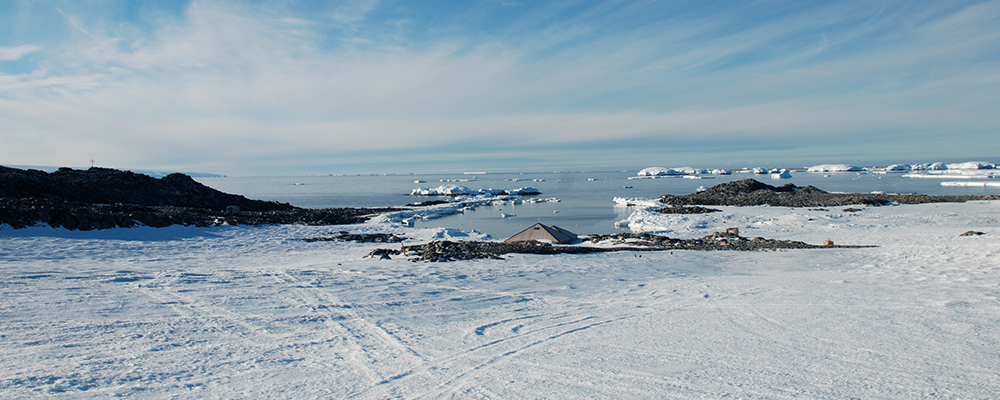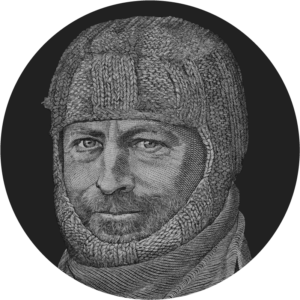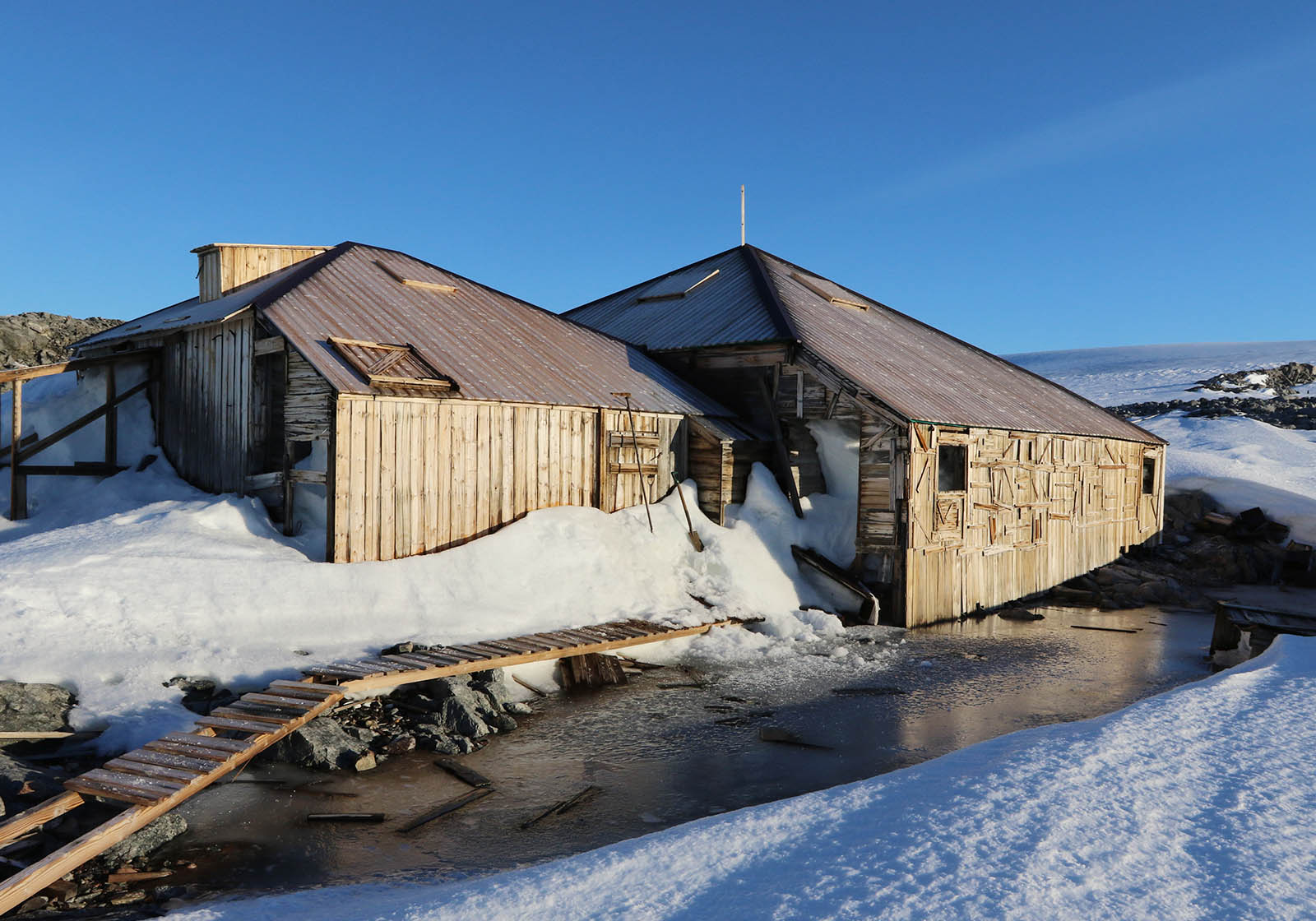

Mawson’s Huts Foundation
An Antarctic Report
- |
- | Latest News
- | David Dieckfoss

About the Author: David Dieckfoss is the Mawson’s huts Foundation Education Officer, and has recently returned from a trip to the Antarctic Peninsula, South Georgia, Elephant Island and the South Shetland Islands.
Recently, I was fortunate enough to be invited to join a cruise to Antarctica as a Science Communicator on board one of the most modern and environmentally friendly Antarctic exploration vessels, the “Ocean Victory” run by Albatros Expeditions. As the Education Officer for the Mawson’s Huts Foundation, my main role is communicating the environmental importance of Antarctica and promoting a positive attitude to research and action. Our main two Educational initiatives within the Mawson’s Huts Foundation are the Mobile Antarctic Classroom and the Antarctic Explorer program. You can read more about both of these on our website, (https://www.mawsons-huts.org.au/ )

A little bit of Background to Antarctic Exploration and Research
Sir Douglas Mawson led the first Australasian Antarctic Expedition to carry out geographical exploration and scientific studies, mapping huge swathes of uncharted territory, covering its geology, biology, marine science and meteorology. He was the first to climb the summit of Mount Erebus and to trek to the South Magnetic Pole. His work on geomagnetism helped pinpoint the exact location of the South Magnetic Pole (at the time it was on land but has since moved off the coast of Antarctica) and laid the groundwork for modern geophysicists to follow the movement of the Magnetic Pole. He played a major role in the establishment of the Antarctic Treaty which is the most successful world treaty of all time promoting international cooperation and scientific research in the Antarctic.
In 1905 Mawson was lecturer in Mineralogy and Petrology at the University of Adelaide. He became interested in the glacial geology of South Australia, which indicated that the climate in South Australia was once more like Antarctica. When (Sir) Ernest Shackleton, leader of the British Antarctic Expedition, visited Adelaide in 1907, Mawson approached him about travelling on the “Nimrod” to Antarctica to examine the icecap, glaciation and its geological consequences. Shackleton was interested and Mawson was appointed Physicist for the duration of the expedition. In 1910 Robert Falcon Scott asked Mawson to join his Terra Nova Expedition. Mawson declined and chose to lead his own expedition to chart the sector of the Antarctic continent immediately south of Australia. It was to be one of Australia’s most important scientific expeditions and established Australia’s interests in the Antarctic.

Antarctica took a “Bight” of Australia
We now know that Australia and Antarctica were once joined in a land called “Gondwana”. Many other land masses were joined to Antarctica but continents are always moving through the process of “Plate Tectonics”. The Earth is a molten ball of rock with a “frozen” crust. The last piece of land to break away from Antarctica was Tasmania around 35 to 40 million years ago, and this allowed the Antarctic Circumpolar current to form and Antarctica became fully glaciated.“
South Georgia Environmental Success story
As an environmental educator, I see the importance of “hope” and a positive attitude to solving the Earth’s environmental problems. There are many examples of how humans through effort, research and motivation can right the wrongs of the past. The identification and repair of the Ozone hole is one example and the rehabilitation of the whale population and biodiversity of South Georgia is another.
South Georgia in the sub Antarctic has experienced one of history’s greatest wildlife decimations at the hands of humans. Its discovery in 1775 by Captain James Cook led to the realisation that the Southern Ocean held enormous populations of fur seals, whales and penguins. From the time that the first whaling station was set up in 1904, an estimated 180,000 whales were killed. Human exploitation and pests decimated seal and bird populations, bringing many species to the brink of extinction. Today through the concerted efforts of researchers, the South Georgia Heritage Trust and many others, the positive change is startling. The Humpback whales are back to pre-whaling days levels and South Georgia is now home to the largest concentration of marine mammals on earth.
The ongoing return of the whales to South Georgia is a wonderful sign of progress, together with the restoration of ground-nesting bird populations through the successful rodent eradication project.

One of the most notable things about the South Georgia Island is the almost overwhelming large population of King penguins that make the island their home. King penguins are the second largest penguin species in the world behind Emperor Penguins. They grow up to 100 cm tall and can weigh up to 16 kg.
Penguins have no real predators on land so are relatively unafraid of humans. In fact, many of them are quite curious about these tall creatures moving about. Quite often I was approached by groups of juvenile King penguins presumably hoping for a feed of regurgitated fish. I was unable to oblige as well as the regulations protecting the Antarctic Environment dictate that we are to keep our distance from the penguins which often means moving back away from the ones that approach. King penguins are remarkably adapted to their environment. They are kept warm by a dense covering of feathers which they shed each year. There are three inner layers of down feathers that act as insulation, and the outer feathers are waterproof and oiled. Their legs and feet have special blood vessels that work as heat exchangers.
King penguin chicks are hatched and raised in colonies, but there are no actual nests. However, each mating pair does have its own small territory within the colony. It takes up to 16 months to fledge each chick, and adult mating pairs cannot rear more than two chicks during a three year time period. Adults and chicks recognise each other by their call. It is amazing when you see the number of penguins that they find each other through the crowds. Once the chick reaches adolescence and their voice breaks, the parents no longer recognise them, which I suspect is quite confusing for the chicks.




The poor young elephant seal (above right) found itself in the middle of King Penguin territory and had a very difficult time trying to get out. The Penguins pecked at it whenever it moved as it was disturbing the territories of individual penguins who had eggs on their feet. Eventually it managed to find its way out. Adult male elephant seals are huge and can reach a length of 6 meters and weigh in at up to 4,000 kg. The South Georgian elephant seals are the largest seal species in the world. The southern elephant seals also have a superior diving ability that enables them to go 1,500 meters down in search of food.
Antarctic Fur Seals are common on South Georgia as well and are much smaller than elephant seals and the cubs are very cute and curious. Every now and then one of the cubs growls at me. The size of an adult fur seal can vary from 1.2 to 3.1 meters and they weigh up to 317 kg . Female seals and their cubs communicate via a call that is specific to them. Researchers have determined that this call is still recognizable after four years apart, and it is possible that this recognition extends longer.
There are a number of other penguin species that live in and around the Antarctic Peninsula, including Adelie, Gentoo and Chinstrap. They all have different sounding calls and live in rocky places in smaller colonies than the King penguins. Most of them use small rocks to build nests and it is interesting to watch them gather rocks for their mates. Some of them gather rock from large distances and some decide it is much easier to steal from the neighbour’s nest. It is possible to watch the politics of penguin colonies for hours and not get bored. Below is a chinstrap penguin and her chick.



Science & Research
Finally one of the most significant things that happen on these Antarctic voyages is the ability to support citizen science projects such as the Happy Whale Project that uses photos of whale tails to identify migration patterns of whales and other projects such as phytoplankton research. The Ocean Victory has the means to facilitate university group research in a way that is much more accessible than grant applications for voyages on research ships such as the RV Investigator or the RSV Nuyina. I was involved in a total of five voyages this season and with the equipment we had on board we were able to collect water samples and view the numerous types of phytoplankton and zoo plankton that inhabit the cold Antarctic waters. These are the micro-organisms that provide the basis of the food chain, supporting the krill, seals, penguins, whales and ultimately all other life forms. If we lose these micro-organisms to environmental pressure, then we lose all the animals that depend on them including the whales, penguins and seals. We were also fortunate enough to find Antarctic Tardigrades and rotifers on a small drop of water from a researcher’s moss sample,
Part of my role on the ship was to run interactive Antarctic Science workshops teaching participants about the role of science in protecting our planet and promoting the work of the Mawson’s Huts Foundation Educational programs. This was particularly enjoyable and we even raised considerable funds in support of the Foundation.



Inspiring future researchers is vital if we are to successfully tackle the environmental issues currently facing our Earth. Antarctica is much more important to the health of our oceans and atmosphere than many people realise.
To discover more about Antarctica:
- access our Antarctic Explorer program or
- request a visit from the Mobile Antarctic Classroom.

